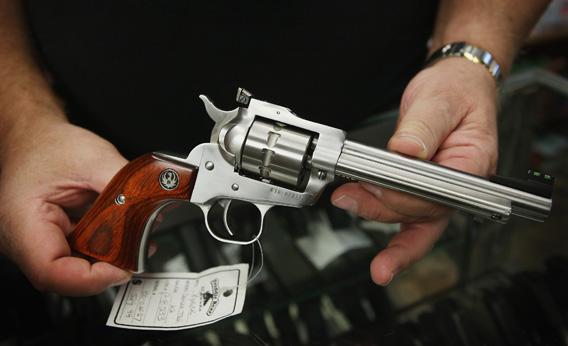Read more in Slate about gun control.
In the wake of the Newtown shooting, Supreme Court watchers assured us that most of the possibilities for new gun regulation are indisputably legal, with nothing to fear from the court’s recent rulings reviving the individual right to bear arms under the Second Amendment. Adam Liptak pointed out in the New York Times that “vanishingly few” of the 500-odd challenges to gun regulations and prosecution have succeeded since District of Columbia v. Heller, the Second Amendment decision that struck down the District’s strict gun-control law in 2008. Lawmakers can still ban felons and the mentally ill from owning guns—Heller said so, and a subsequent ruling in 2010, McDonald v. Chicago, repeated the point. They can still stop people from carrying concealed weapons in places like schools and national parks. And lower courts have also upheld bans on machine guns and sawed-off shotguns. Universal background check, tighter requirements for mental health reporting, and banning high-capacity ammunition clips all look safe, too.
Still, there is a hot question bouncing around the lower courts: whether the constitutional right to bear arms, as laid out in Heller and McDonald, extends outside the home. The answer matters especially, but not only, for how tightly the states or Congress can limit people from carrying concealed weapons. Judges are dividing on that question, and the upshot is this: If the Supreme Court wants to stop the recognition of a right to bear arms outside the home, it will have to step up and say so.
Judge Richard Posner (a Slate contributor) basically dared the justices to do that in a December opinion for the U.S. Court of Appeals for the Seventh Circuit. At least that’s how I read him. Writing for himself in the New Republic, Posner has been only critical of Justice Antonin Scalia’s majority opinion in Heller. But with his judicial robes on, he struck down an Illinois law that banned the carrying of concealed weapons outside law enforcement almost without exception. He noted that the Supreme Court in Heller and McDonald said that “the need for defense of self-family, and property is most acute” in the home, but argues that in the 18th Century, when the Second Amendment was written, a right to keep and bear arms “could not rationally have been limited” to inside people’s houses. Remember the wildness of the Wild West, Posner says. Or, as Yale law professor Akhil Amar pointed out to me, a line in Dred Scott, the evil pre-Civil War decision that held that neither slaves nor free black people were U.S. citizens or protected by the Constitution. In that ruling, the Supreme Court said that if blacks were full citizens, they would have “the full liberty … to keep and carry arms wherever they went.” And Dred Scott matters even though it’s not from the founding era, because McDonald says that the Second Amendment applies to the states through the 14th Amendment, enacted during Reconstruction in 1868.
Another good reason for striking down Illinois’ ban, both Posner and Amar point out, is that it was an outlier: the only one of its kind in the country. So maybe it doesn’t mean that much for the rest of the states—maybe they can still tightly restrict the carrying of concealed weapons as long as they allow for permitting in some way. That’s what the U.S. Court of Appeals for the Second Circuit decided last November. That case is about a New York law that says you can get a permit to carry a concealed gun if you can show “proper cause.” New Yorkers must show that they have more need of self-defense than the average person, for example, because they’re the target of a threat—which is pretty restrictive. But the Second Circuit said that was OK because a right to bear arms outside the home goes beyond Heller and McDonald. In other words, the court disagrees with Posner on his core reading of the Supreme Court.
To add one more court to the mix: Last March, a federal judge in Maryland struck down a state requirement that asks permit applicants to show a “good and substantial reason” for carrying a concealed weapon. The Maryland law this court nixed looks a lot like the New York law the Second Circuit allowed: The state of Maryland would like to limit gun permits to those who can show they’ve been personally threatened (or who are in a business in which you must carry cash).
At some point the Supreme Court will probably take one of these cases because this split among the lower courts is the type that only the justices can resolve. You can see why it’s on the justices to say that there’s no right to bear arms outside the home, if that is indeed a limit they see in the Second Amendment. In the meantime, it’s a good thing the Obama administration and Congress aren’t fussing with conceal and carry laws. There are plenty of ways to cut back on gun violence and also steer clear of the next round in the Second Amendment wars.
